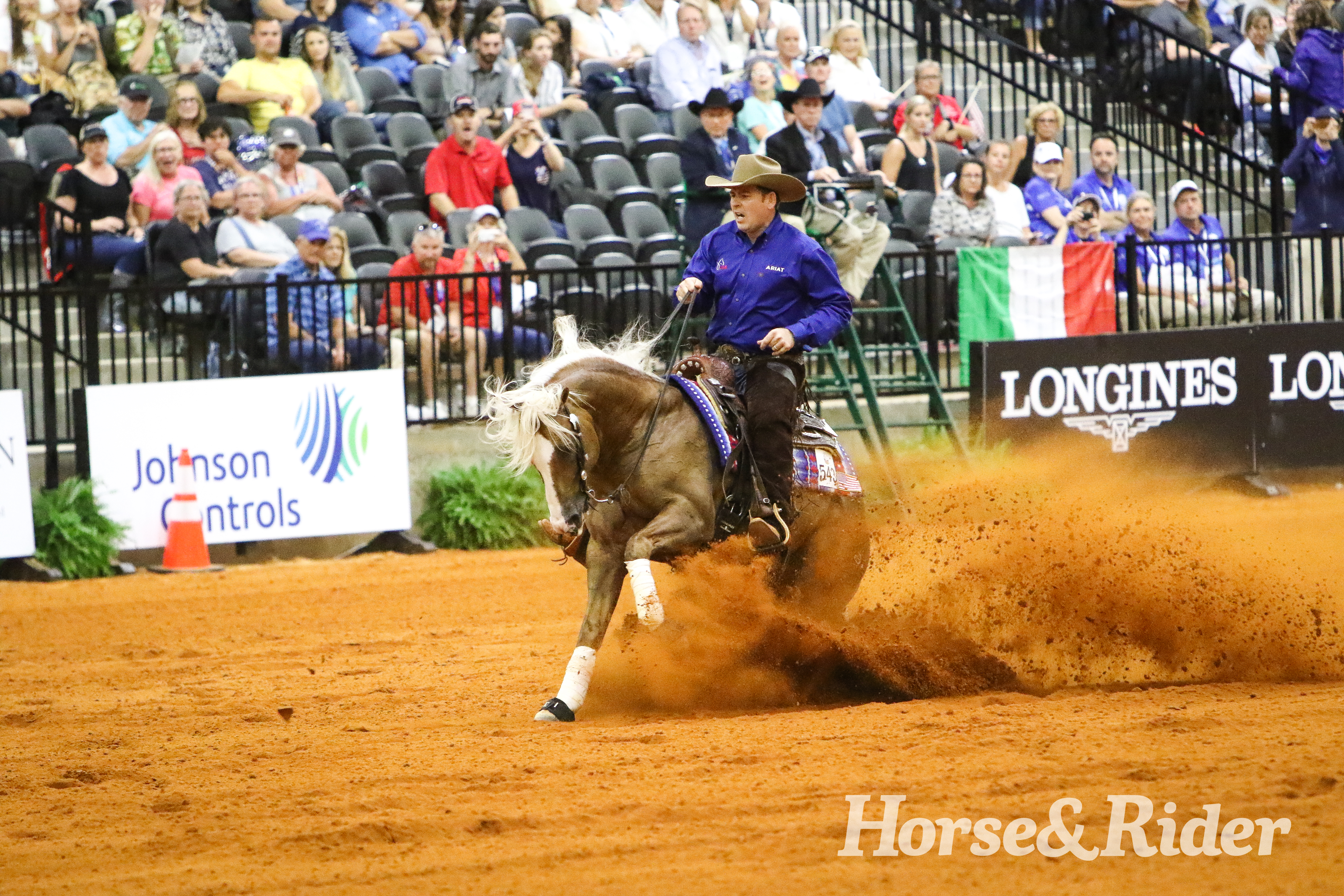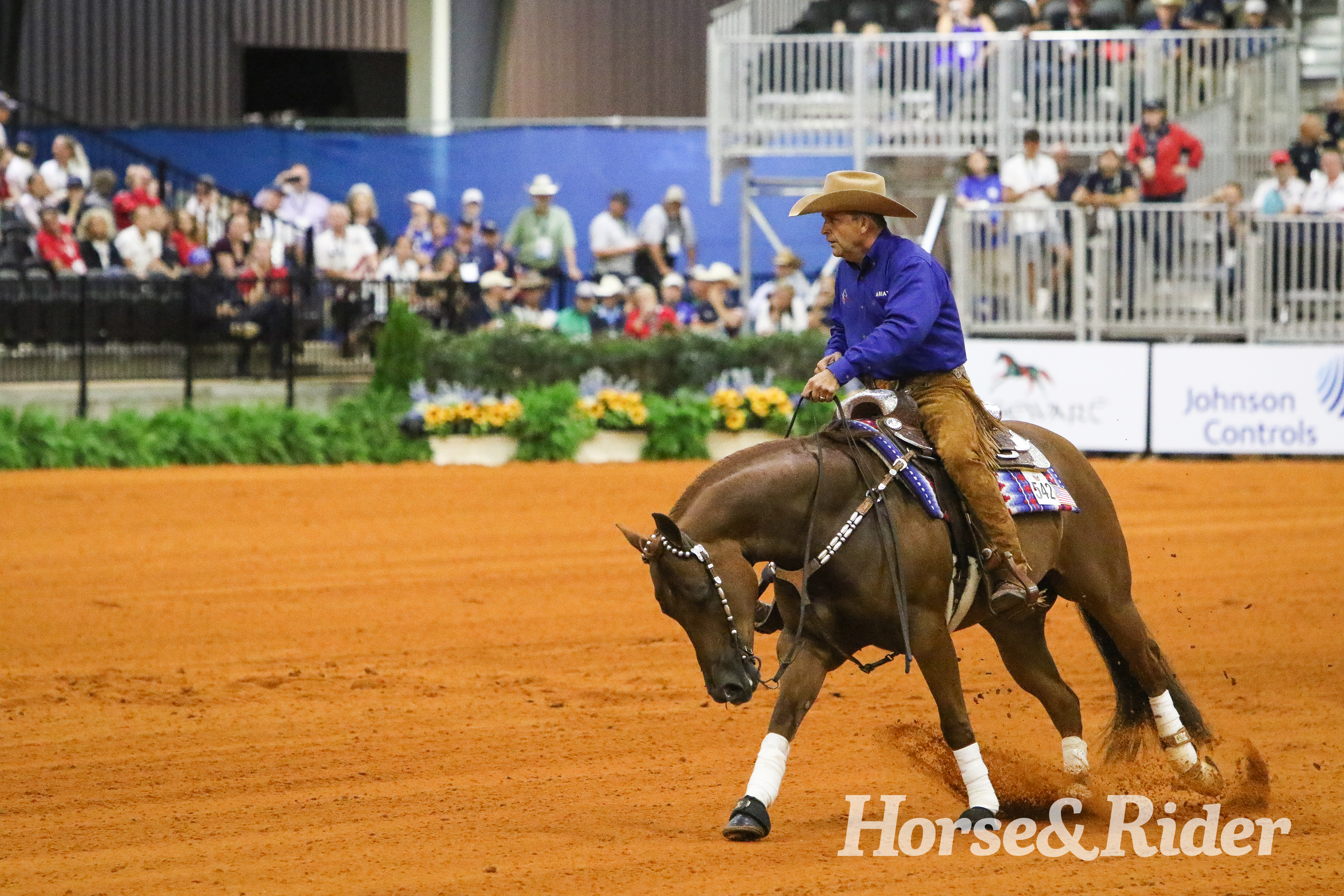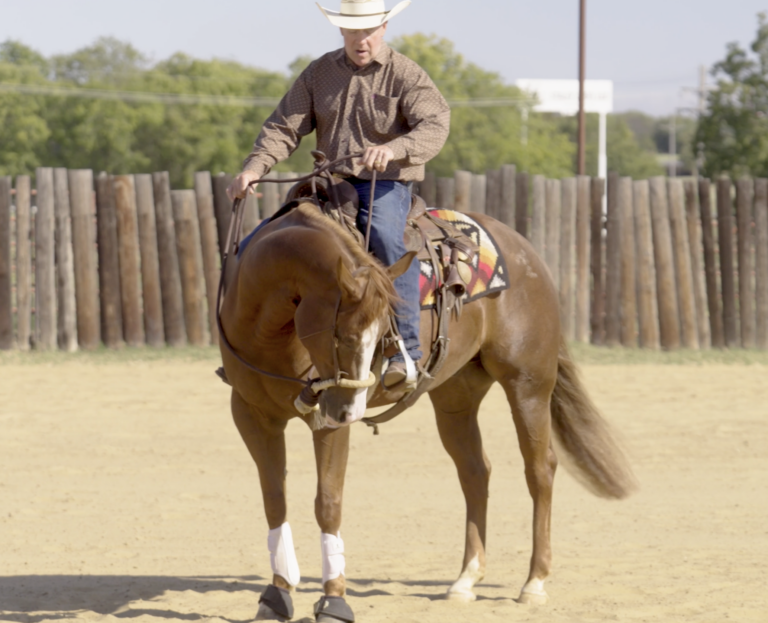When you look for a horse to fill a specific need, it’s dangerously easy to get caught up in buying the first thing that comes closest to your particular vision. But keep in mind that reiners are athletes first—and athletes come in all sizes, shapes, and colors, so try to stay open-minded.
Rather than setting fixed criteria, I evaluate a horse in four key areas—breeding, presence, athleticism, and conformation. A horse needs more pluses than minuses in all four categories before I’ll give him serious consideration.

1. Breeding. While good individuals can come from many different bloodlines, a horse that’s been bred to be an athlete is the most likely reining prospect. In particular, I like cow horse breeding, or reiners crossed with cutting or cow horses. Breeding isn’t the most important factor, but this type of pedigree draws me in, because I’ve had success with it in the past.
2. Presence. Because I’m looking for show horses, my first impression of a prospect has a strong influence on my opinion of him. I have to like the horse at first sight, even before he’s ridden, because a show horse must be pretty and striking, with real “look-at-me” presence. When something gorgeous comes into the show pen, a judge can’t help sitting up and taking notice, and thinking, “Can this one do what it looks like he can do?” That grab of attention gives you an automatic edge in the show pen.

3. Athleticism. The horse may be bred to be an athlete, and he may look like one, but next I want to see and feel that he’ll actually be one. Agility, suppleness, balance, and responsiveness are essential for a reiner. Training can improve these qualities, but a good reining prospect should show them from the start. I look for fluid movement at all three gaits, prompt reactions to a rider’s cues, plus balanced turns, transitions, and stops.
4. Conformation. A horse that has strong back and hocks, and naturally carries his head and neck almost level, gets a plus from me. He has the build to perform in reining events, and his flat neck will help him stay balanced. I try to avoid horses that have crooked legs and other serious flaws to increase odds of the horse staying sound. But you’ll note that conformation isn’t at the top on my list. That’s because I’ve had good horses with all sorts of defects. When a horse’s conformation will handicap him in reining events, he’ll usually show it in his athleticism (above). A flaw that isn’t serious enough to affect his performance or compromise his future soundness probably won’t affect my evaluation.
Ready to look for your next reiner? Go to Equine.com, the premier classifieds site of the Equine Network, to search for the perfect horse.






